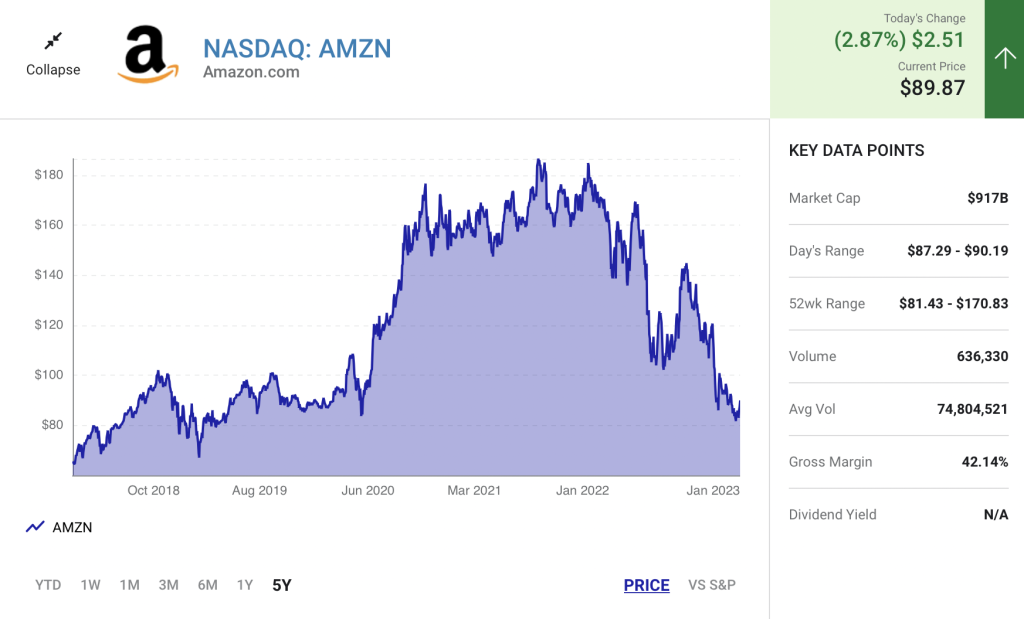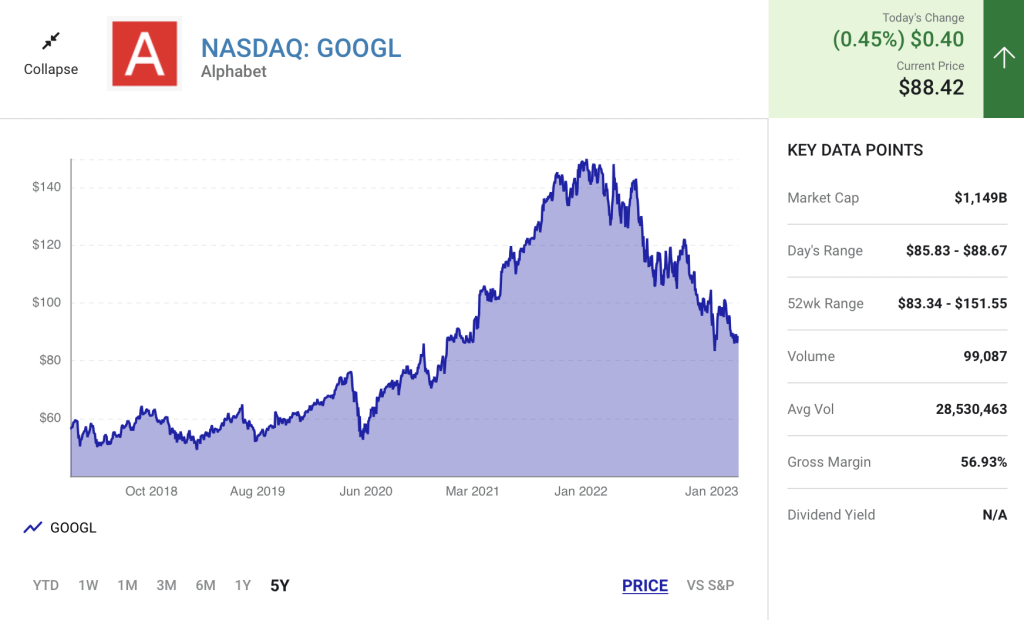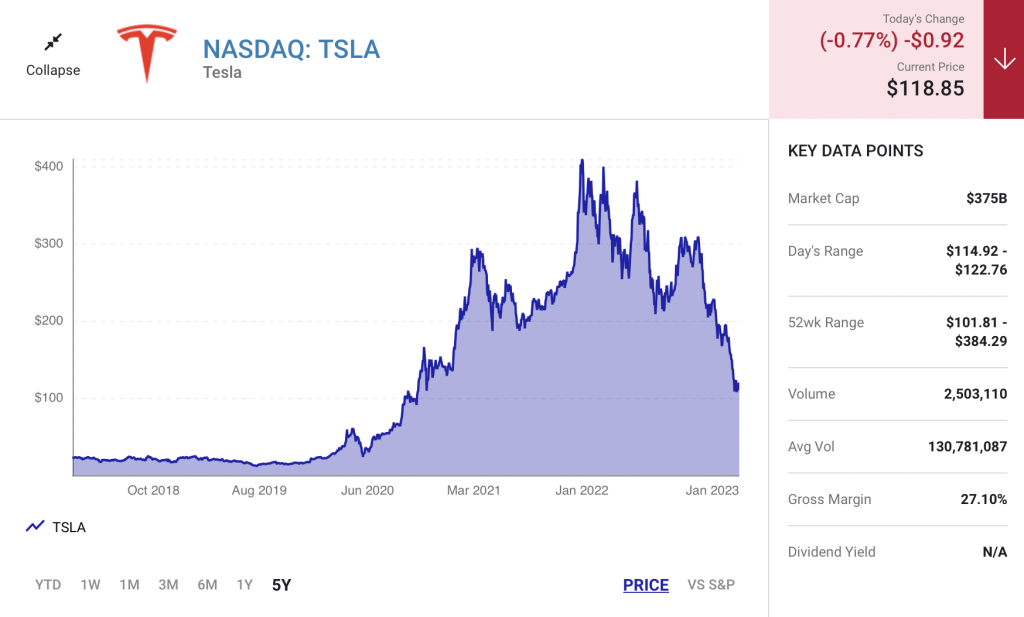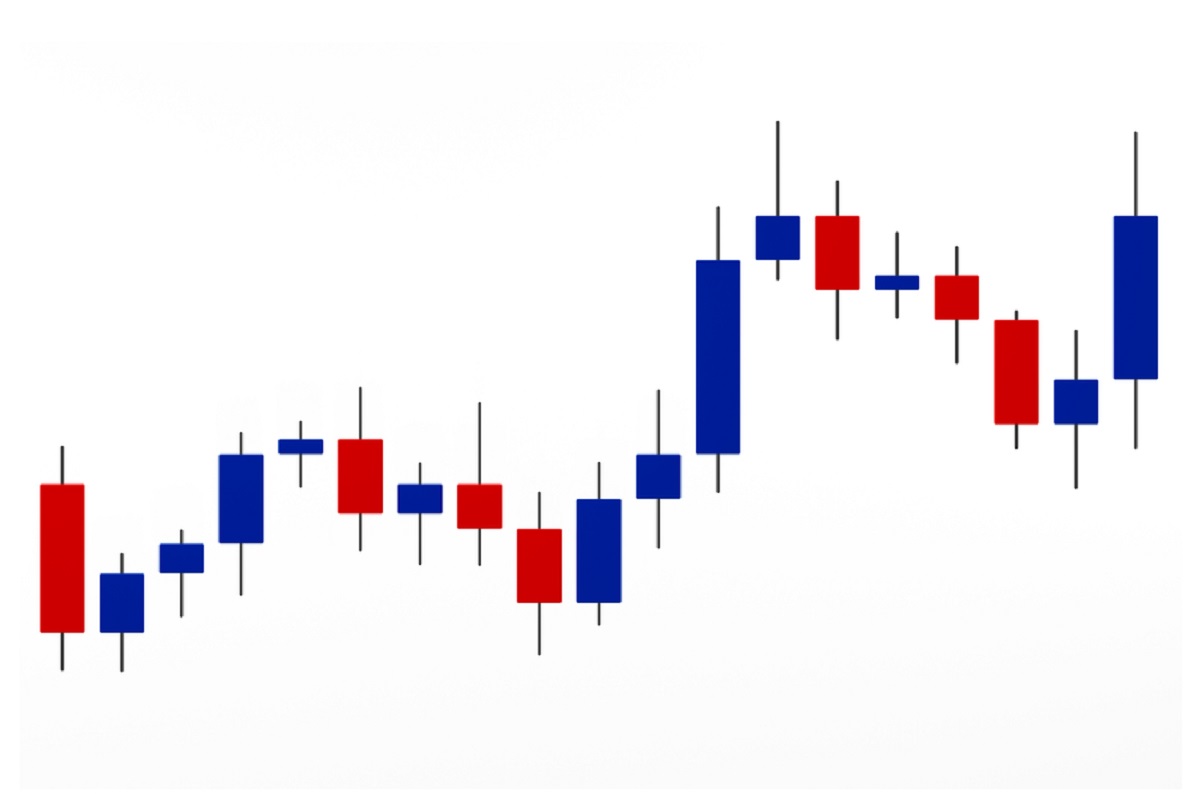Two stock-split stocks stand out as amazing deals in the new year, while an ultra-popular stock that split last year is rife with red flags.
There’s no sugarcoating it; 2022 was a brutal year for investors. The respective declines of 9% for the Dow Jones Industrial Average, 19% for the S&P 500, and 33% for the Nasdaq Composite marked their worst returns since 2008.
But if there was one trend that continued to draw optimists throughout the 2022 bear market, it was companies enacting stock splits. A stock split allows a publicly traded company to alter its share price and outstanding share count without impacting its market cap or operating performance.
Last year, well over 200 companies announced and implemented stock splits. However, the type of split that excites investors most is a forward stock split. This is where the share price of a company is reduced and its outstanding share count increases by the same magnitude, Thus, there’s no change in market cap. Companies that enact forward stock splits are usually firing on all cylinders and out-innovating their competition.
As we barrel forward into a new year, two stock-split stocks stand out as amazing values that can confidently be bought hand over fist. Meanwhile, another widely owned stock-split stock looks to be worth avoiding in 2023.
Stock-split stock No. 1 to buy hand over fist in 2023: Amazon
The first stock-split stock that’s begging to be bought in the new year is e-commerce kingpin Amazon(AMZN 2.87%). Amazon announced its intent to conduct a 20-for-1 split in March and completed this action in early June. Investors once needed more than $3,700 to buy a single share of Amazon but can now purchase a share for about $86.
Amazon has lost more than half of its value based on the growing likelihood that the U.S. and/or global economy will enter a recession in 2023. Since the company generates most of its revenue from its world-leading online marketplace, a slowdown in retail sales is viewed as bad news by the investment community.

However, it’s incredibly important to note that while Amazon does bring in most of its revenue from online retail sales, this is a low-margin segment responsible for little in the way of operating cash flow and net income. Cash flow is a particularly meaningful operating metric to follow for Amazon, since the company tends to reinvest most of its cash flow into high-growth initiatives and its ever-growing logistics network.
What’s key for Amazon’s growth is that its three prominent ancillary operating segments are thriving — and hint, hint… they are! I’m talking about cloud-infrastructure segment Amazon Web Services (AWS), subscription services, and advertising services. Excluding currency movements, AWS, subscription services, and advertising services recorded sales growth in the third quarter of 28%, 14%, and 30%, respectively.
AWS is, unquestionably, the most important segment for Amazon. Cloud-service spending is still in its infancy, and AWS currently accounts for nearly a third of global cloud-infrastructure revenue (as of Q3). Despite producing only around a sixth of Amazon’s net sales, AWS generates 50% or more of the company’s operating income.
Meanwhile, subscription services and advertising services are producing annual revenue run rates of $35.6 billion and $38.2 billion, respectively. Amazon Prime surpassed 200 million worldwide subscribers in April 2021 and has likely added to this total since becoming the exclusive streaming provider of Thursday Night Football. And as the fourth most-visited website in the U.S. last month, Amazon has no trouble commanding strong ad-pricing power.
With Amazon’s cash-flow needle still pointing higher, it makes for a no-brainer buy in 2023.

Stock-split stock No. 2 to buy hand over fist in 2023: Alphabet
The second stock-split stock you can confidently buy hand over fist in 2023 is Alphabet(GOOGL 0.45%) (GOOG 0.49%), the parent company of internet search engine Google, autonomous vehicle company Waymo, and streaming service YouTube. Alphabet announced a 20-for-1 split in February 2022. After gaining shareholder approval, it conducted its forward split in mid-July.
Although Alphabet’s stock hasn’t been pummeled to the same degree as Amazon, shares of the company are still roughly 40% below their all-time high. Skeptics appear to be concerned with the state of the advertising industry. Ad spending is among the first things to falter when the U.S. and global economy weakens. Since most of Alphabet’s revenue is ad-based, there are clear worries about near-term growth.
But there’s another side to this story. Even though slowdowns and recessions are a natural part of the economic cycle, recessions usually last only a couple of quarters. By comparison, economic expansions are measured in years. While ad spending has its ups and downs, the “ups” disproportionately outweigh the “downs.”
What’s long made Alphabet special is its search engine. Data from GlobalStats shows that Google has accounted for between 91% and 93% of worldwide internet search-market share since the beginning of 2020. Advertisers wanting to target their message at specific users fully understand that Google gives them the best chance to do so. Not surprisingly, Google’s ad-pricing power is top-notch more often than not.
However, it’s Alphabet’s other operating segments that will be tasked with driving its growth throughout the decade. For instance, Google Cloud chimes in as the world’s No. 3 cloud infrastructure service provider and has sustainably grown sales by close to 40% from the prior-year period. Traditionally, cloud-operating margins are higher than advertising margins, which should be a positive for the company’s cash-flow generation.
There’s also YouTube, which has grown to become the second most-visited social site globally. Alphabet is currently exploring ways to increase YouTube Shorts monetization. As of April 2022, YouTube Shorts was racking up more than 30 billion views per day!
Similar to Amazon, Alphabet looks to be historically cheap relative to its future cash-flow generation.
The stock-split stock to avoid like the plague in the new year: Tesla
On the other side of the aisle is a wildly popular stock-split stock that can be actively avoided by investors in 2023: electric vehicle (EV) manufacturer Tesla (TSLA -0.77%). North America’s leading EV company announced its intent to split in June. Shareholder approval later allowed Tesla to stomp the accelerator on a 3-for-1 split in late August.
Tesla has certainly done some things right; otherwise, it wouldn’t have become the largest automaker by market cap. Tesla became the first start-up auto company to reach mass production in more than a half-century. CEO Elon Musk oversees the production of four models (Model 3, S, X, and Y) as well as the Tesla Semi.
Last year, Tesla reached a psychological milestone of delivering more than 1 million EVs. With new gigafactories in Berlin, Germany, and Austin, Texas coming online in 2022, there seems to be little doubt that Musk’s company will make a run at surpassing 1.5 million EVs produced in 2023 (assuming global supply chains cooperate).

But there are mounting red flags that suggest the most valuable EV maker should be avoided. To start with, we’ve seen Tesla cut prices for its flagship Model 3 sedan and Model Y SUV in China and the United States. Even if Tesla is able to deliver a growing number of EVs, the lower price point for these EVs will reduce its gross margin.
Another concern is that Tesla widely missed Wall Street’s forecast deliveries for Q4. Even though year-over-year growth in deliveries was strong, the company’s rising inventory levels and price cuts suggest things aren’t going well at the moment. In other words, we’re seeing evidence that Tesla isn’t immune to the supply chain issues, high inflation, and demand concerns plaguing the auto industry.
Yet the biggest reason of all to avoid Tesla in 2023 is CEO Elon Musk. Putting aside that Musk seems completely distracted by his purchase of social media site Twitter, he’s been a liability in every facet for Tesla. Even though he’s an innovator, he’s drawn the ire of securities regulators on more than one occasion, and constantly overpromises and underdelivers when it comes to new innovations and products. Since Tesla’s market cap is built on these unmet promises, there’s a good chance more air is set to come out of Tesla’s premium valuation.
Read Next – Bloomberg: This tiny company’s tech could “solve the energy crisis.”
It’s time for you to take part in the greatest energy revolution of our lifetime.
It’s projected to be 10X bigger than the electric vehicle revolution…
Which turned an early $500 investment in Tesla into $207,000.
And it will be bigger than the solar power revolution…
Which would have turned a $2,500 investment in Enphase Energy into over $1 million.
This is the gretaest energy investing opportunity of our lifetimes.
And the best part is…
According to Bloomberg, President Biden has “almost guaranteed” that investors will have a shot at making a fortune from this brand new type of energy.
Because it holds the key to “solving the energy crisis” in America.
And Biden has authorized $80 billion be spent immediately to bring this new type of energy to market ASAP.
And for the small company at the center of this energy revolution, their share price is about to go through the roof.
A small $500 stake could potentially turn into $234,000.
Those billions of federal funding are set to be dispensed every minute…
And when that happens, this stock is expected to rocket to the moon.
So, you need to see the details about this opportunity right now.





